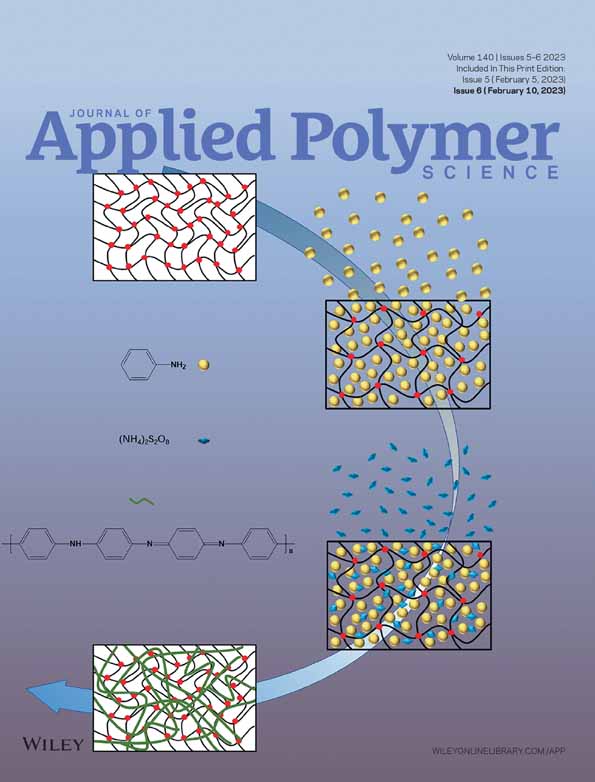Electrically-assisted chemical vapor polymerization: A novel method for in situ polymerization of pyrrole
Abstract
This article offers a fast and innovative process for carrying out in situ polymerization of pyrrole onto a polyester fabric. This process is based on electrically-assisted chemical vapor polymerization that takes around 180 s to produce an electroconductive fabric with a surface resistance of as low as 70 Ω. The ultrasonication carried out at 20 kHz frequency is quite effective in binding the polymer to the fabric. Fourier-transform infrared spectroscopy and X-ray diffraction studies confirm that the polymer formed is polypyrrole. The application of electric potential across an oxidant-enriched fabric results in polymer add-on of polypyrrole as high as 250%. The amount of polypyrrole formed and the surface resistance of the fabric are found to depend on the potential applied across the fabric. The concentrations of the oxidant and the dopant, the time of polymerization, and the rate of monomer vaporization are found to be critical in deciding the surface resistance of the fabric.
Open Research
DATA AVAILABILITY STATEMENT
The data that support the findings of this study are available from the corresponding author upon reasonable request.




